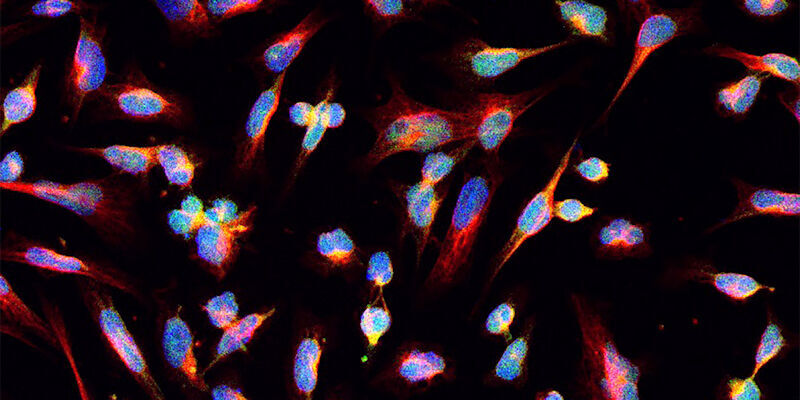
When brain tumours are treated with radiation or chemotherapy their cells evolve in a way that appears to be random, according to research published today in Nature.
The findings help explain why diffuse glioma is one of the most difficult cancers to treat and could help to identify more effective treatment strategies for patients worldwide.
Diffuse glioma is the most common malignant brain tumour in adults, with 2,500 adults diagnosed in the UK every year.
An international team of 87 researchers and clinicians have published the largest time series database of glioma tumour profiles to date, with samples from 222 patients at 35 hospitals across Europe, Asia, Australia and the USA.
Tumour samples were taken at multiple time points during treatment so that scientists could try to understand how the tumours evolved in response to therapy.
The database could help predict how effective new cancer treatments might be at tackling brain tumours, enabling us to prioritise development of those that are most likely to succeed.
Co-author Dr Lucy Stead, from the University of Leeds’ School of Medicine, said: “These findings show why gliomas are so hard to treat. In other cancers, cells with certain mutations were found to resist treatment, and discovering those mutations allowed new drugs to be developed. Unfortunately, in glioma, where tumour regrowth after treatment is almost universal, we have not found any such mutations.
“However, this database can now act as a reference for researchers and clinicians to study glioma evolution in response to treatment.
“The database could help predict how effective new cancer treatments might be at tackling brain tumours, enabling us to prioritise development of those that are most likely to succeed.”
International collaboration
Glioma invariably returns despite surgical, radiotherapeutic and chemotherapeutic interventions. But while the initial molecular characteristics have been well described in gliomas, their subsequent evolution under treatment remained unknown.
To address this problem, an international community of clinicians and researchers established the Glioma Longitudinal Analysis (GLASS) Consortium, which is investigating the dynamics of molecular changes in gliomas over time.
Lead researcher Dr Roel Verhaak, from The Jackson Laboratory in the USA, said: “More data are needed to fully understand glioma evolution, but the GLASS resource provides an excellent foundation to more effectively study both evolution and treatment response.
“Collectively, these findings will help us determine what treatment approaches will result in the greatest removal or killing of glioma cells possible.”
How do gliomas evolve?
Until relatively recently, cancer was viewed as a single disease with sub-types based on where in the body it arose.
The advent of detailed molecular analysis has shown that the situation is far more complicated, and that there can be many sub-clonal cell populations even within a single tumour.
That creates a significant problem for effective therapy: eradicating one type of cancer cell may leave another unaffected, and it may actually confer a competitive advantage to it.
Pilot grants like that given to support Dr Stead are extremely important to support the world-class research that takes place here in Leeds.
In their new study, the international GLASS Consortium found that when glioma cells were stressed by cancer therapies such as radiation and chemotherapy, they did not evolve in a consistent manner.
They did find some common features between patient samples, such as hypermutation - a very high rate of mutation in the genome - and aneuploidy - in which entire chromosomes were lost or acquired through cell division errors.
Following early events that drove cancer initiation and progression, the researchers found that the evolution of tumours often appeared to be random instead of proceeding down predictable paths.
Potential cancer vaccine
The researchers also assessed how immune activity can shape glioma evolution.
Immunotherapy, which uses the body’s own immune system to target and eliminate cancer cells, is an exciting new field, and understanding immune interactions in the tumour microenvironment and glioma immune evasion is an important step for possible implementation.
The research showed that immune activity doesn’t vary in glioma over time, though there were patient-to-patient differences, and more work is needed to fully understand the variability and what immunotherapy strategies might be most effective for gliomas.
The researchers identified a particular mutation in the gene IDH1 that produces a neoantigen - a potential immune system target - and persists through recurrence. The finding provides a possible opening for vaccine treatment at both initial and recurrent stages of glioma.
Dr Stead added: “Other researchers are currently trying to develop IDH1 vaccines and clinical trials are underway.
“Our results suggest we can have more confidence that these trials may succeed, which is particularly important given that survival for brain tumours has not increased for decades.”
The research carried out at the University of Leeds and Leeds Teaching Hospitals NHS Trust was funded by Leeds Cares and the PPR Foundation.
Kevin Gerrie, Director of Fundraising at Leeds Cares, said it was vital that the charity was able to invest in research like this. He said: “Pilot grants like that given to support Dr Stead are extremely important to support the world-class research that takes place here in Leeds.
“Our donors and supporters will be delighted to know that this work will provide crucial insights for the treatment of those with malignant brain tumours.”
Further information
Header image shows glioma cancer cells. Credit: Castro Lab, Michigan Medicine, Ann Arbor
For media enquiries email the University of Leeds Press Office at pressoffice@leeds.ac.uk
The paper, published in the journal Nature, is titled ‘Longitudinal molecular trajectories of diffuse glioma in adults’ and will be available online at: https://www.nature.com/articles/s41586-019-1775-1